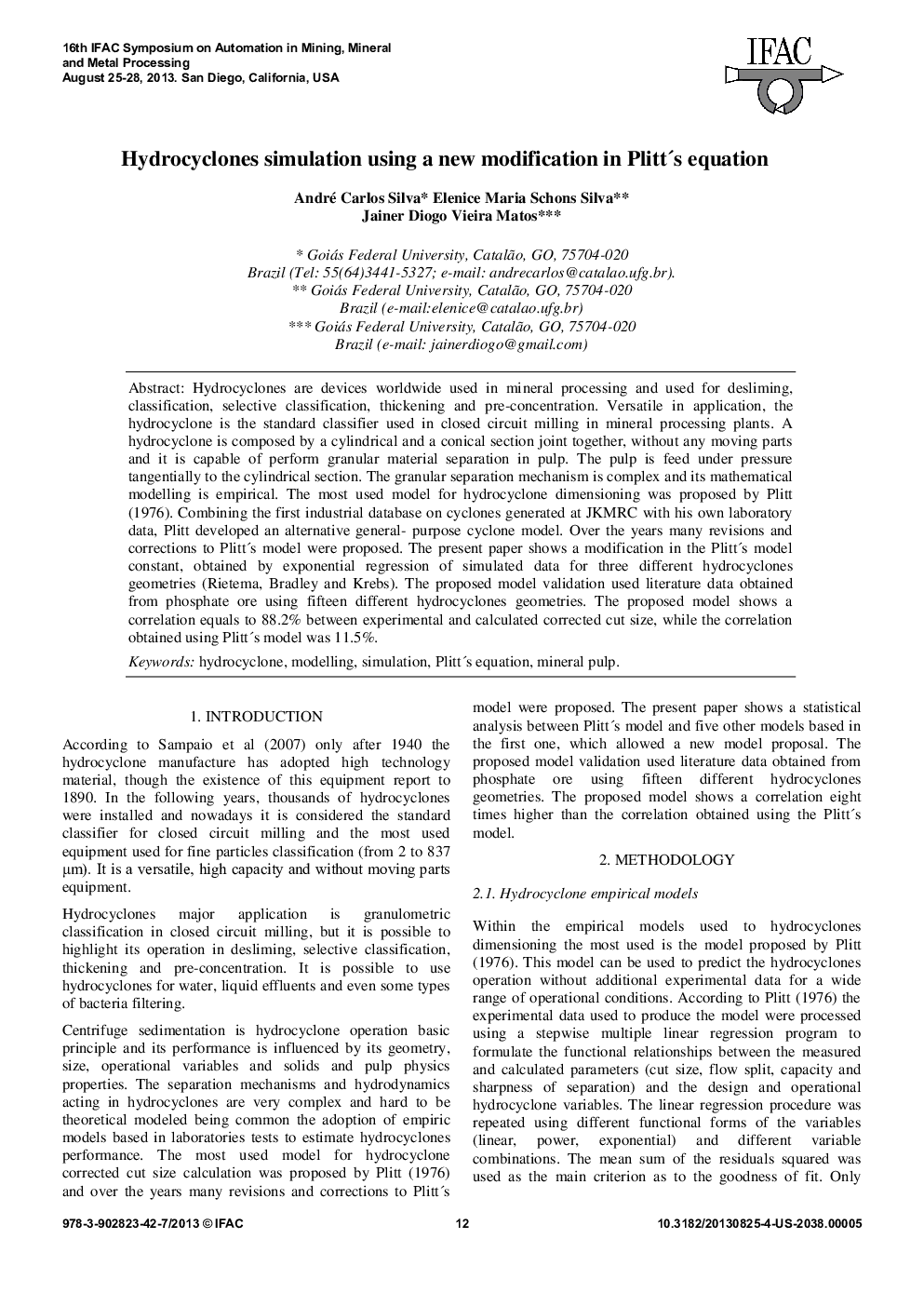| Article ID | Journal | Published Year | Pages | File Type |
|---|---|---|---|---|
| 709311 | IFAC Proceedings Volumes | 2013 | 6 Pages |
Hydrocyclones are devices worldwide used in mineral processing and used for desliming, classification, selective classification, thickening and pre-concentration. Versatile in application, the hydrocyclone is the standard classifier used in closed circuit milling in mineral processing plants. A hydrocyclone is composed by a cylindrical and a conical section joint together, without any moving parts and it is capable of perform granular material separation in pulp. The pulp is feed under pressure tangentially to the cylindrical section. The granular separation mechanism is complex and its mathematical modelling is empirical. The most used model for hydrocyclone dimensioning was proposed by Plitt (1976). Combining the first industrial database on cyclones generated at JKMRC with his own laboratory data, Plitt developed an alternative general- purpose cyclone model. Over the years many revisions and corrections to Plitt's model were proposed. The present paper shows a modification in the Plitt's model constant, obtained by exponential regression of simulated data for three different hydrocyclones geometries (Rietema, Bradley and Krebs). The proposed model validation used literature data obtained from phosphate ore using fifteen different hydrocyclones geometries. The proposed model shows a correlation equals to 88.2% between experimental and calculated corrected cut size, while the correlation obtained using Plitt's model was 11.5%
